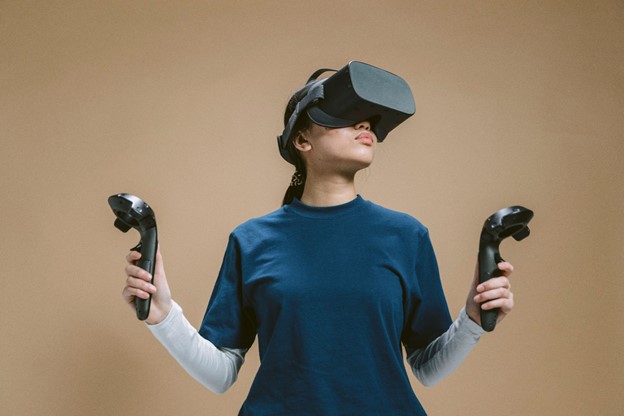5 Things You Didn’t Know About the Gaming Industry

Staying up-to-date on current gaming trends can be as time-consuming as a full-time job. Whether it’s understanding how RTP works, or what the capabilities of a GPT-3 AI are; there’s always new and innovative technology coming out. Gaming companies should hire a lawyer specializing in Web3 technologies to protect their intellectual property and ensure they do not run afoul of privacy, gambling, and other regulations. It can be hard to keep up with all of the latest developments. To help gain some valuable insight, we’ve put together 5 things about the gaming industry that most people are unaware of.
1. True mass appeal
Most people would agree that gaming is immensely popular. What you may not know is just how massive it has become. Behind Youtube and social media platforms, gaming is the third most popular activity in the world – far ahead of traditional media such as movies and television. Video games have transcended age gaps, class systems, and various arbitrary social boundaries.
It’s been estimated that by the end of 2021, gamers around the globe will add up to over 3 billion people. Nearly half of the global population played video games in the last year. Looking at this data can tell us a lot about our habits, which technologies are trending, and how integral gaming has become to society as a whole.
Mobile gaming is now bigger than console and PC gaming combined. Of an average 4 billion people that use the internet every day, roughly three out of every four are mobile gamers. More than half of all UK and US households own at least one console, but even that number has slowed due to mobile game dominance. The majority of gamers are clearly on mobile systems, and developers are releasing more mobile-focused games.
2. Extended realities
Extended Reality (XR) is an umbrella term for Virtual Reality (VR), Augmented Reality (AR), and Mixed Reality (MR). For those unfamiliar with any of these concepts; VR is a complete digital environment; AR superimposes digital elements on a real environment; and MR is a combination of VR and AR. VR already boasts some of the most immersive video game experiences of today, and is being used in many industries for a wide range of applications.
VR devices like the Oculus Rift and HTC Vive are now considered mainstream products, and the list of available VR-supported games is growing rapidly. Valve’s Half-Life Alyx, the sequel to one of the best games of all time, can only be experienced in VR. Pokemon Go was a global phenomenon, but it wouldn’t have been possible without AR technology.
Extended reality has had a positive influence on a number of different sectors, particularly when it comes to experiences that are hard to replicate safely in a real life context. Many countries use VR in their military training, for example. The US has a full-VR training program for soldiers based in Hawaii. As another example, flight simulators use XR to provide training for pilots. Surgeons even use Oculus VR to practice risky life-saving procedures. The aforementioned examples are but a few of the diverse applications of XR technology.

3. Artificial intelligence
From machine learning to content creation, gaming and AI have advanced side-by-side to push the boundaries of modern technology. Through innovation and ingenuity, we’ve gone from basic chess AI to advanced neural networks, in less time than the average human lifespan.
Deepmind is a pioneering AI research and development company. Deepmind’s AlphaGo AI is an advanced search neural network. This revolutionary AI went from learning how to play Go (a popular Chinese variant of chess), to being one of the world’s best Go players in less than two years. AlphaGo’s successor, AlphaZero, surpassed its skill level in less than a week.
AlphaGo’s most recent descendant, MuZero, can learn any game without being given rules on how to play. As formidable as it is versatile, MuZero has already learned over 60 games, including both Go and chess. This AI is formidable to the point that a human simply cannot compete with it. It would take the smartest human more than one lifetime to reach MuZero’s level of knowledge and expertise.
4. Growing pains
Compared to entertainment mediums like movies and music, the gaming industry is relatively young. Due to exponential growth, video games have had to deal with an ever-growing spotlight being cast on issues such as developer crunch, union busting, and harassment scandals.
Similar to Hollywood’s “#MeToo” movement, the games industry has seen a spate of harassment and abuse claims. In our digital age, news can spread incredibly quickly, and a few companies have found that out the hard way. Activision Blizzard was recently sued for unfair labor practices, for example, and is at the centre of an intimidation scandal involving allegations of union busting.
Apple and Epic Games have been in a well-publicised lawsuit since August of 2020. The lawsuit received a verdict in early September of 2021. The split ruling allows developers to bypass Apple’s 15-30% cut on all App Store purchases, via the use of in-game payment options. Though it serves as a precedent case against monopolistic practices, the ruling can still be changed in its 90-day review period. This corporate battle is far from over, and it will be interesting to find out what the final outcome will be.
5. Helping to heal
Peer-reviewed studies have shown that games can offer a variety of health benefits. There are already games that have been made specifically with treatment in mind; for many conditions such as PTSD and physical disability. Video games are able to alleviate depression and anxiety, and they can be a cathartic outlet for a variety of negative emotions.
In studies conducted on military veterans, video games have shown promise as a therapeutic tool for PTSD recovery, and they can lead to improved brain function. Commercial video games have been used to treat degenerative brain diseases, and could even become a viable treatment method for mental illness.
Games provide stimulation and relaxation, at times simultaneously. They can serve as an escape from reality, or as a reconnection to our physical selves. They help us to connect with each other, and allow us to ignore physical boundaries. Whether it’s to make new friends or maintain contact with family, they are bridges that can connect the social highways of today.





